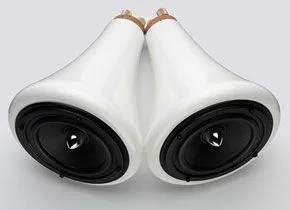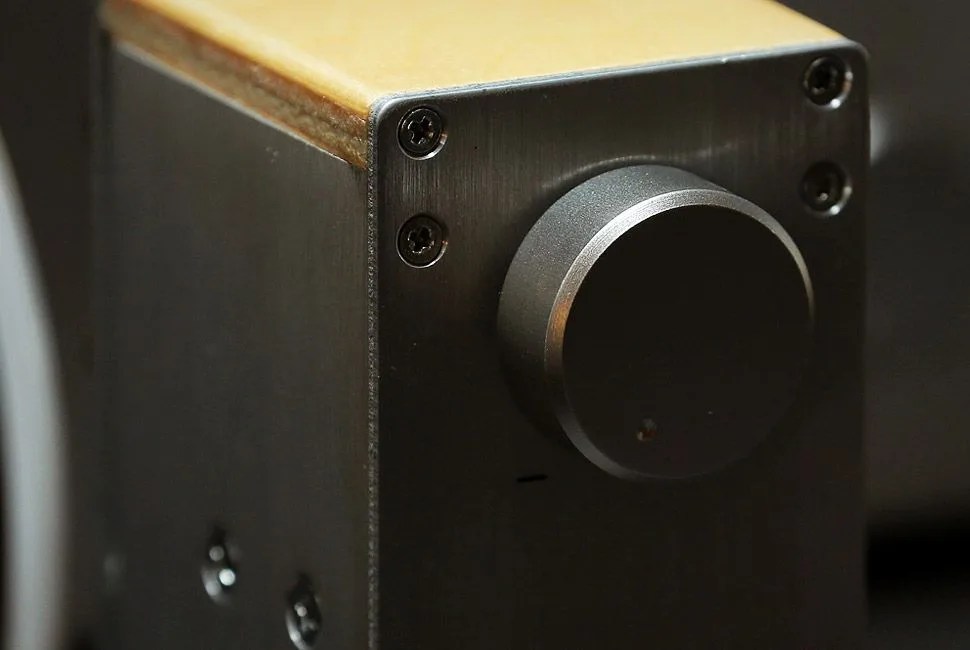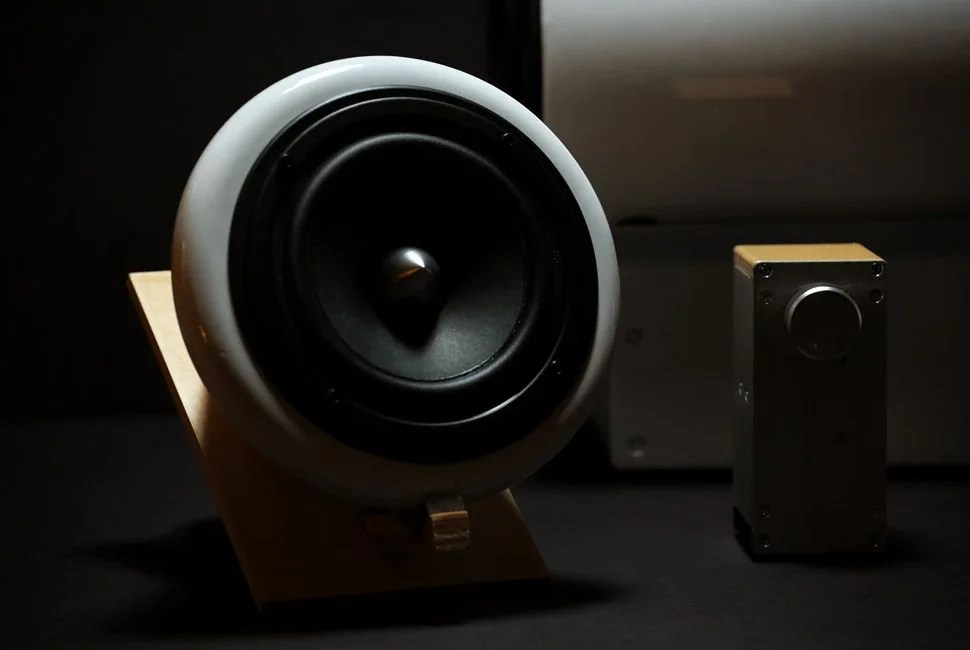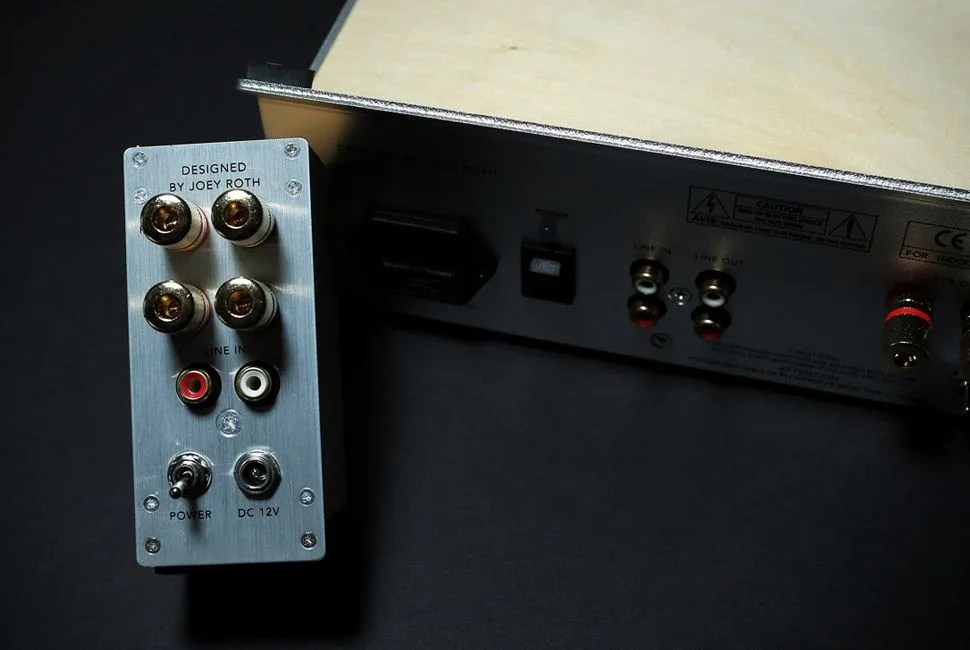Hours Played: 24
Source: Rotel RC-972 Preamp, Rotel RCD-990 CD Player, iTunes on MacBook Pro
Bottom Line: The third-generation of this 2.1 industrial design classic could easily be considered a design exercise — but it’s so much more. Yes, it’s impressive design will make you want to build a console, perhaps even a room, around it, but the sonics are equally matched. It delivers tonality and balance from a humble, yet soulful amplifier. Power is not everything. Good power is. Just be sure to run a clean source to it and please, whatever you do, don’t drop it.
When they were introduced in 2010, Roth’s speakers received all kinds of acclaim. Mostly, they were lauded for their simplicity in design: two shiny white porcelain cones perched lightly on a birch frame, the pulsating drivers left exposed and staring like a mad pair of eyes. They could have been a novelty, good-looking speakers by a guy whose second-best-selling item is a planter. Instead, Roth took meticulous care to make them sound good, too — better than the little buggers had any right to sound, regardless of where the music was coming from. That is, they’re equally adept at showcasing the subtleties carved into your Count Basie record collection as they are at livening up a party when someone commandeers your iPad to blast Robyn videos on YouTube.
Roth could’ve kicked up his feet, pumped some Dirty Projectors and sipped bourbon for the next few years, if he was so inclined. But something was missing. First, the system needed a subwoofer, which Roth finally released last year. The triumph of the subwoofer is its size. It mimics the look of the speakers and, thanks to the porcelain construction and a passive radiator at one end, only uses a driver that’s 6.5 inches in diameter. It’s toned down to register details rather than just booming, overwhelming bass. It adds fullness without filling up too much space. And unlike other unwieldy and ugly subs on the market, this one’s meant to be kept in plain view, hanging out on its 50-watt amp/base, a perfect complement to the pair of speakers beside it.
But some of the best changes in this version are ones most people, hardcore audiophiles excluded, won’t even notice. Roth completely overhauled the amp, making the footprint smaller and switching out the 3.5mm input for a proper, full-size RCA input to offer a crisper, more consistent sound. Even better? He changed the volume control from a vertical slider to a rotary knob, which offers smoother, less noisy transition — and therefore better sound altogether. Again, these are tiny, almost insignificant details. But now it’s much closer to perfect than it was the first time around. Even if he ends up tweaking it again, that’s something we can get behind.








